Curriculum-Based Library Instruction
Medical Library Association Books
The Medical Library Association (MLA) features books that showcase the expertise of health sciences librarians for other librarians and professionals.
MLA Books are excellent resources for librarians in hospitals, medical research practice, and other settings. These volumes will provide health care professionals and patients with accurate information that can improve outcomes and save lives.
Each book in the series has been overseen editorially since conception by the Medical Library Association Books Panel, composed of MLA members with expertise spanning the breadth of health sciences librarianship.
Medical Library Association Books Panel
Barbara Gushrowski, chair
Lauren M. Young, AHIP, chair designate
Michel C. Atlas
Dorothy C. May
Karen McElfresh
Megan Curran Rosenbloom
Tracy Shields
Kristen L. Young, AHIP
Heidi Heilemann, AHIP, board liaison
About the Medical Library Association
Founded in 1898, MLA is a 501(c)(3) nonprofit, educational organization of 4,000 individual and institutional members in the health sciences information field that provides lifelong educational opportunities, supports a knowledge base of health information research, and works with a global network of partners to promote the importance of quality information for improved health to the health care community and the public.
Books in Series
The Medical Library Association Guide to Providing Consumer and Patient Health Information edited by Michele Spatz
Health Sciences Librarianship edited by M. Sandra Wood
Curriculum-Based Library Instruction: From Cultivating Faculty Relationships to Assessment edited by Amy Blevins and Megan Inman
Curriculum-Based Library Instruction
From Cultivating Faculty Relationships to Assessment
Edited by Amy E. Blevins and Megan B. Inman
ROWMAN & LITTLEFIELD
Lanham Boulder New York London
Published by Rowman & Littlefield
A wholly owned subsidiary of The Rowman & Littlefield Publishing Group, Inc.
4501 Forbes Boulevard, Suite 200, Lanham, Maryland 20706
www.rowman.com
16 Carlisle Street, London W1D 3BT, United Kingdom
Copyright 2014 by Medical Library Association
All rights reserved. No part of this book may be reproduced in any form or by any electronic or mechanical means, including information storage and retrieval systems, without written permission from the publisher, except by a reviewer who may quote passages in a review.
British Library Cataloguing in Publication Information Available
Library of Congress Cataloging-in-Publication Data
Curriculum-based library instruction : from cultivating faculty relationships to assessment / edited by Amy Blevins, Megan Inman.
pages cm. (Medical Library Association books)
Includes bibliographical references and index.
ISBN 978-1-4422-3913-5 (cloth : alk. paper) ISBN 978-1-4422-3165-8 (pbk. : alk. paper) ISBN 978-1-4422-3166-5 (ebook) 1. Library orientation. 2. Library orientation for medical students. 3. Information literacyStudy and ta 4. Academic librariesRelations with faculty and curriculum. 5. Medical librarians. I. Blevins, Amy, 1981editor. II. Inman, Megan, 1983 editor.
Z711.C875 2014
025.5'6dc23 2014021093
 The paper used in this publication meets the minimum requirements of American National Standard for Information SciencesPermanence of Paper for Printed Library Materials, ANSI/NISO Z39.48-1992.
The paper used in this publication meets the minimum requirements of American National Standard for Information SciencesPermanence of Paper for Printed Library Materials, ANSI/NISO Z39.48-1992.
Printed in the United States of America
Contents
Preface
Instruction is a major component of the services offered by an academic library, and with the explosion of information sources and databases, quality instruction continues to become more and more important. It is often assumed that students are prepared for the rigors of higher education, when in actuality they are frequently lacking the necessary information literacy skills to become adept researchers. Students are often functioning with below adequate skills and rely on their own knowledge and that of their peers when seeking library-related information.
The rampant nature of technology has caused a shift in information-seeking behaviors. In addition, current trends such as evidence-based medicine and information literacy mean that one-time instructional sessions cannot provide our patrons with all of the skills they need. For this reason, many librarians are working to develop curriculum-based instruction that is semester long or consisting of many sessions throughout an academic program. In addition to teaching, librarians are also becoming embedded in the curriculums they support by serving as web-based course designers, problem-based learning facilitators, or members of curriculum committees.
Although it is fairly obvious that library instruction is important and that librarians should be equipped to provide this instruction, the majority of ALA accredited programs offer only one course on library instruction, the courses are only available as electives, and they are often only offered once a year. As stated by McAdoo and supported by the fact that instructional tracks are virtually nonexistent in library schools, librarians need to gain their instructional experiences through real-life experiences, mentors, and of course, books like this one.
Many books commonly discuss one-shot sessions and provide tips for getting the most out of that type of instruction. There are not as many that discuss curriculum-based instruction in a section, let alone an entire book. This book will encourage readers to move past the one-shot instructional sessions by providing best practices and examples of ways that other librarians have established curriculum-based programs. It will also discuss some of the basic principles for instruction which should appeal to those who are either novices or experts in library instruction. Furthermore, this book will use case studies to explore and discuss the expanding roles of librarians in the curriculum of higher education settings.
Librarians are considered to be embedded in the curriculum or providing curriculum-based instruction when they are fulfilling roles such as but not limited to semester-long or multi-session instructor, web-based course designer, problem-based learning facilitator, and/or member of a curriculum committee. In addition to describing the roles that librarians have in supporting curriculum, this book describes how to carry out various roles with sections devoted to adult learning theory, teaching methods, developing learning objectives, and working with faculty to develop curriculum. Case studies of library sessions devoted to information literacy, evidence-based practice, and biomedical informatics are also included. In addition, the importance of context-appropriate assessment and evaluation is discussed. This book will not be limited to one mode of delivering information and will cover examples of face-to-face, distance, and blended learning initiatives.
This book is broken down into six parts. The first part focuses on the initial process of becoming involved with faculty and provides stories and tips for becoming a part of a curriculum committee or working to increase the amount of time students spend in library instruction sessions. The second part of the book concentrates on learning theories such as adult and active learning. The third part of the book focuses on instructional techniques. It includes chapters on audience response systems, team-based learning, and so on. The fourth part is based on modes of instruction and assessment, and full chapters are devoted to current trends such as online instruction and blended learning. The fifth and sixth parts of this book are introductions to evidence-based practice, information literacy, and bioinformatics and include case studies that describe in detail how to carry out subject specific curriculum-based instruction. These parts focus on health sciences and other disciplines, respectively. With this book and a little bit of determination, you will be well on your way to designing your own curriculum-based library instruction program.
Next page
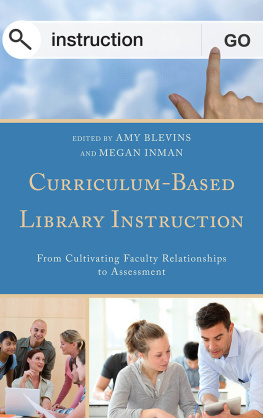
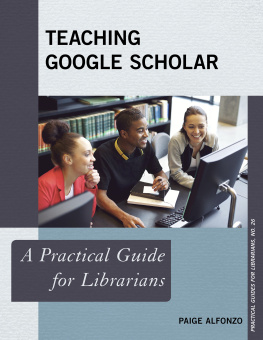
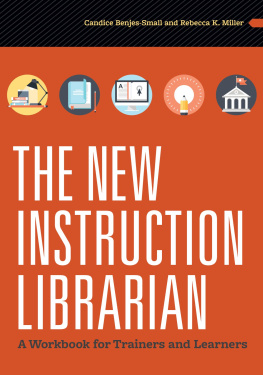

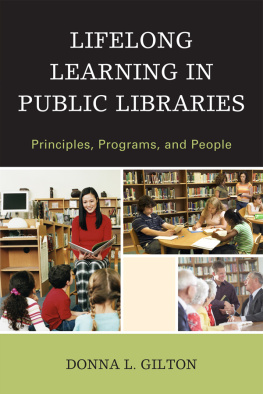
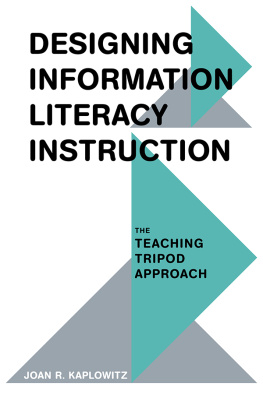
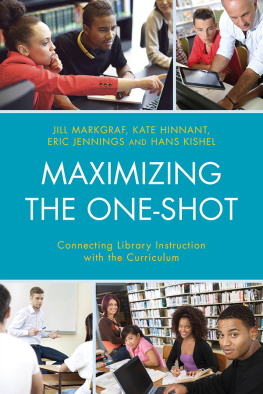

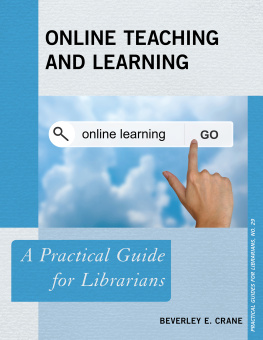
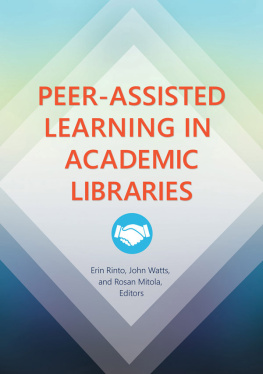

 The paper used in this publication meets the minimum requirements of American National Standard for Information SciencesPermanence of Paper for Printed Library Materials, ANSI/NISO Z39.48-1992.
The paper used in this publication meets the minimum requirements of American National Standard for Information SciencesPermanence of Paper for Printed Library Materials, ANSI/NISO Z39.48-1992.